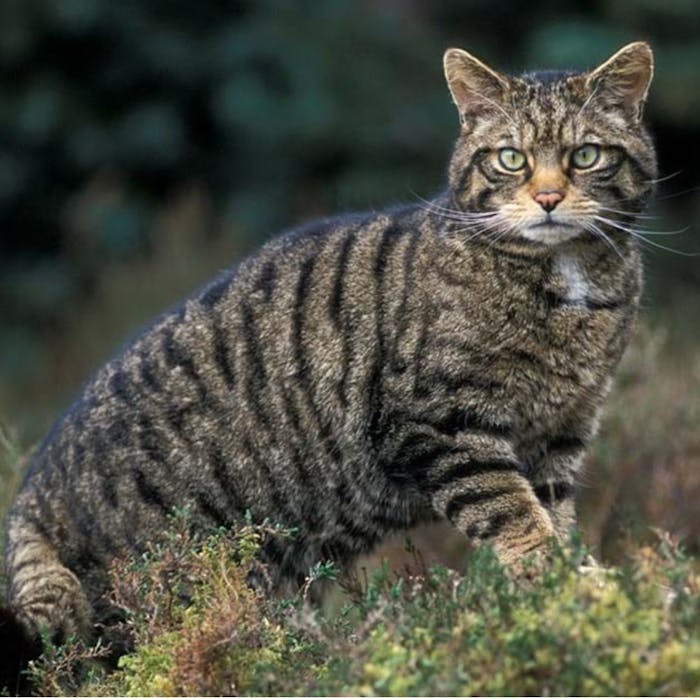
The almost-extinct Scottish wildcat
The Scottish wildcat clings on as a small enclave of the European wildcat species in Scotland. They are listed as Critically Endangered in the United Kingdom – with only 400 cats estimated to meet the genetic and morphological criteria of a wildcat, rather than a domestic cat.
The population was once spread more widely over Britain, but has declined since the early 20th century due to habitat loss and persecution - mainly to protect game species of bird. Another threat has been hybridisation. Many wildcats cross with feral domestic cats in a breeding season that takes place from January to March. This dilutes the wildcat's genes and means the species’ distinctive features may eventually be lost.
Physically, the wildcat is more muscular than domestic cats, with longer legs and a larger head. Their ears stick out to the side, and they are marked with very distinctive solid black and brown stripes
Due to their rarity, the wildcat is not often seen. They are only found in the Scottish Highlands, and don’t usually occur higher than 650 metres above sea level, preferring to live and hunt in areas of dense cover such as woodland edges. They mainly feed on rabbits and small rodents such as voles, but also hunt hares and a variety of bird species. The creatures have excellent sight, hearing and sense of smell, as well as highly sensitive whiskers. They will stalk their prey and pounce after a patient wait.
The folkloric creature Cat Sith is, in Scottish mythology, a witch or fairy disguised as a large cat, which prowls the Highlands. It is thought to be inspired by the wildcat.
Further reading
- About the Scottish Wildcat - NatureScot
- Scottish Wildcat Action Charity
- Scottish Wildcat Art Gallery - Creative Conservation Project
Links to external websites are not maintained by Bite Sized Britain. They are provided to give users access to additional information. Bite Sized Britain is not responsible for the content of these external websites.
